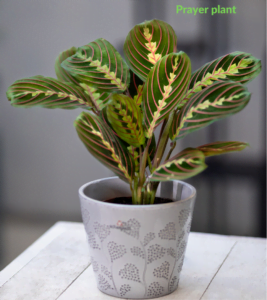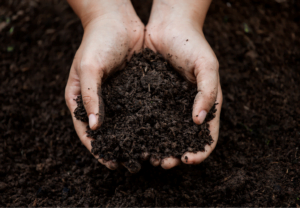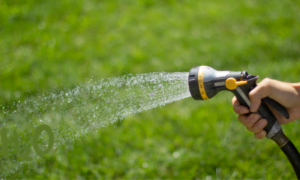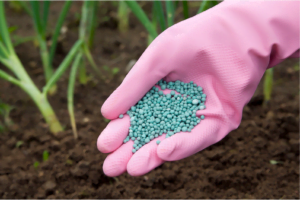
Prayer trees play a unique role in enhancing the beauty of the home. You can plant this tree anytime and take care of it very nicely. From 2018 to the present year 2024, I have 14 prayer trees which I take good care of, and they make my home environment very beautiful. In today’s blog, I will try to give details about these prayer trees from my personal experience. The name of this tree is a prayer tree. The reason behind this is said to be that during the day, the tree lays flat like a normal tree leaf, but at night it folds its leaves like a prayer, hence the name of the prayer tree. These plants can reach up to a foot in height and are very popular as houseplants. You’ll also be happy to know that these plants are non-toxic to animals and humans, according to the American Society for the Prevention of Cruelty to Animals.
In today’s blog, first, I will show you how to take care of this tree, how you can arrange this tree very beautifully in your home, and how to take care of this tree. You will get the right idea.
· Common Name |
Prayer plant |
· Botanical Name |
Maranta leuconeura |
· Family |
Marantaceae |
· Plant Type |
Herbaceous, perennial |
· Mature Size |
6-12in. tall 6-12 on. Wide |
· Sun Exposure |
Partial, shade |
· Soil Type |
Moist but well-drained |
· Soil pH |
Neutral, acidic |
· Bloom Time |
Spring |
· Flower Color |
White |
· Hardiness Zones |
11-12 (USDA) |
· Native Area |
· South America |
Prayer Plant Care
Before taking care of this plant, you should know very well in advance that this plant grows best in warm greenhouse-like conditions. With warm, humid weather and well-drained, nutrient-rich soil, and regular fertilizing, this plant stays fresh and grows very well. However, poorly drained soil can cause root rot, and exposure to too much sun can lead to the death of plants. Brown spots may appear on their leaves.
Light

In every blog, I’ve mentioned sunlight and its importance for plants, including prayer trees. Just like any other plant, a prayer tree requires sunlight to survive for a long time. However, it should not be exposed to direct sunlight; instead, it thrives in indirect sunlight.
During winter, it’s beneficial to expose the plant to direct sunlight for some time. However, it’s crucial to understand why direct sunlight should be avoided. In summer, the main reason is that the ultraviolet rays in direct sunlight can harm the plant, even enough to burn its leaves. Therefore, it’s best to avoid placing the plant in direct sunlight.
Soil

The quality of soil for a plant is one of the most important factors to consider, as a plant derives 80 to 90% of its food and nutrients from the soil. Therefore, selecting soil that lacks essential nutrients can hinder the plant’s growth. Based on my personal opinion and extensive experience, well-drained, loamy, and acidic soil is suitable for this plant. Alternatively, you can create a mixture by combining two parts sphagnum peat moss, one part topsoil, and one part perlite or coarse sand, which also works very well.
Water

Water is very important for a plant because, without water, nothing can survive for long. So, the prayer plant will not survive for long without water; this is also an eternal truth. However, giving excess water to this plant is also very harmful. So, how much and when to water this plant? Now, I will point out that this plant will probably only need to be watered once or twice a week during the spring and summer and only once a week during the fall and winter. And yes, while giving water, you must check the soil at the base of the plant with your hands. If the soil above one inch is dry, then water must be given before it is completely dry to avoid any problems. If too much water is provided, this plant can develop fungal problems, and the roots of the plant can rot.
Temperature

Temperature plays a significant role in a plant’s longevity. Likewise, prayer plants are not tolerant of excessive heat. Currently, our indoor temperatures range from 60 to 80 degrees Fahrenheit. However, if you want to keep your prayer plant looking fresh and at its best, you may need to provide additional humidity. Place a small humidifier nearby, or place the plant in a tray filled with small stones and water.
Fertilizer

It is very necessary to use fertilizers on plants because, as a plant grows, it needs more food and nutrients day by day. The soil at the base of the plant starts to lose nutrients over time, so fertilizing the plant periodically is beneficial. Fertilize this plant once every two weeks from early spring to fall and once a month in winter. However, keep in mind that excess fertilizer can burn the roots of the plant and potentially kill it, so always follow the recommended guidelines.
Pruning Prayer Plants
The prayer tree does not require much pruning, as this plant can reach a maximum height of one foot. However, if you want to enhance the beauty of this plant, you can prune it, which will benefit your plant. Just be careful not to over-trim it.
Common problems with prayer plants
Yellowish leaves
Prayer plants are known for their vibrancy, but yellowing of the leaves can be a common problem faced by many plant owners. This discoloration can be a sign of underlying problems that need to be addressed immediately to restore the plant’s health.
Over-supply of water
One of the main causes of yellow leaves on prayer plants is over-watering. Excess water can lead to root rot, which prevents plants from properly absorbing vital nutrients.
Lack of good food
Yellow leaves can also indicate a lack of essential nutrients such as nitrogen, potassium, and iron. Therefore, it’s important to fertilize your prayer plant regularly to provide the necessary nutrients for healthy growth.
Poor lighting
Not enough or too intense light can cause prayer plant leaves to turn yellow. Therefore, it’s crucial to place your plants in a well-lit area with moderate light intensity to prevent damage.
Remember to keep your prayer-plants in the right shade to allow flexibility in your watering, provide adequate nutrition, and prevent and maintain the yellowing of the leaves.
The leaves are brown
The brown leaves of the prayer plant can be a nuisance, indicating an underlying problem that needs to be managed to prevent further damage to the plant. Understanding what can cause brown leaves can help to manage the problem more effectively.
Low humidity

Prayer plants grow in very humid climates, and low humidity can cause the browning of leaves. Consider installing a humidifier near your office or establishing a regular misting routine to provide ample moisture to the plant.
Insufficient water
Irregular or insufficient watering can also cause browning of leaves. Make sure your prayer plants are always adequately hydrated and that the soil can drain excess moisture well to maintain healthy foliage.
insects or diseases
Brown leaves can be a symptom of a pest or disorder affecting your prayer plant. Inspect the plant carefully for signs and symptoms of pests, such as spider mites or mealybugs, and treat the plant accordingly.
Monitor humidity levels, water your prayer plant consistently, and watch for pests or diseases to salvage your brown leaves and promote the overall health of your plant.
Leaf fall
Dropping leaves on a prayer tree can upset any plant owner because it indicates stress or an unfavorable environment for the plant. Addressing the root cause of leaf drop is critical to restoring your plant’s vitality.
Temperature fluctuations
Extreme temperature changes can cause prayer-plants to drop their leaves. Ensure your plant is kept in a stable environment with a consistent temperature to prevent stress.
Root bound
If your prayer plant outgrows its current container, it can become root-bound, causing leaf drop. Repotting the plant in a larger container provides more room for root growth and prevents leaf damage.
Underwatering
By maintaining a stable temperature, repotting as needed, and providing adequate watering, you can prevent leaf drop and promote the overall health of your prayer plant.
Remember, addressing common problems like yellow leaves, brown leaves, and leaf drop can help your prayer plant thrive and enhance the beauty of your living space. Monitor your plant carefully, adjust care routines as needed, and enjoy the rewarding experience of nurturing a healthy prayer plant.

